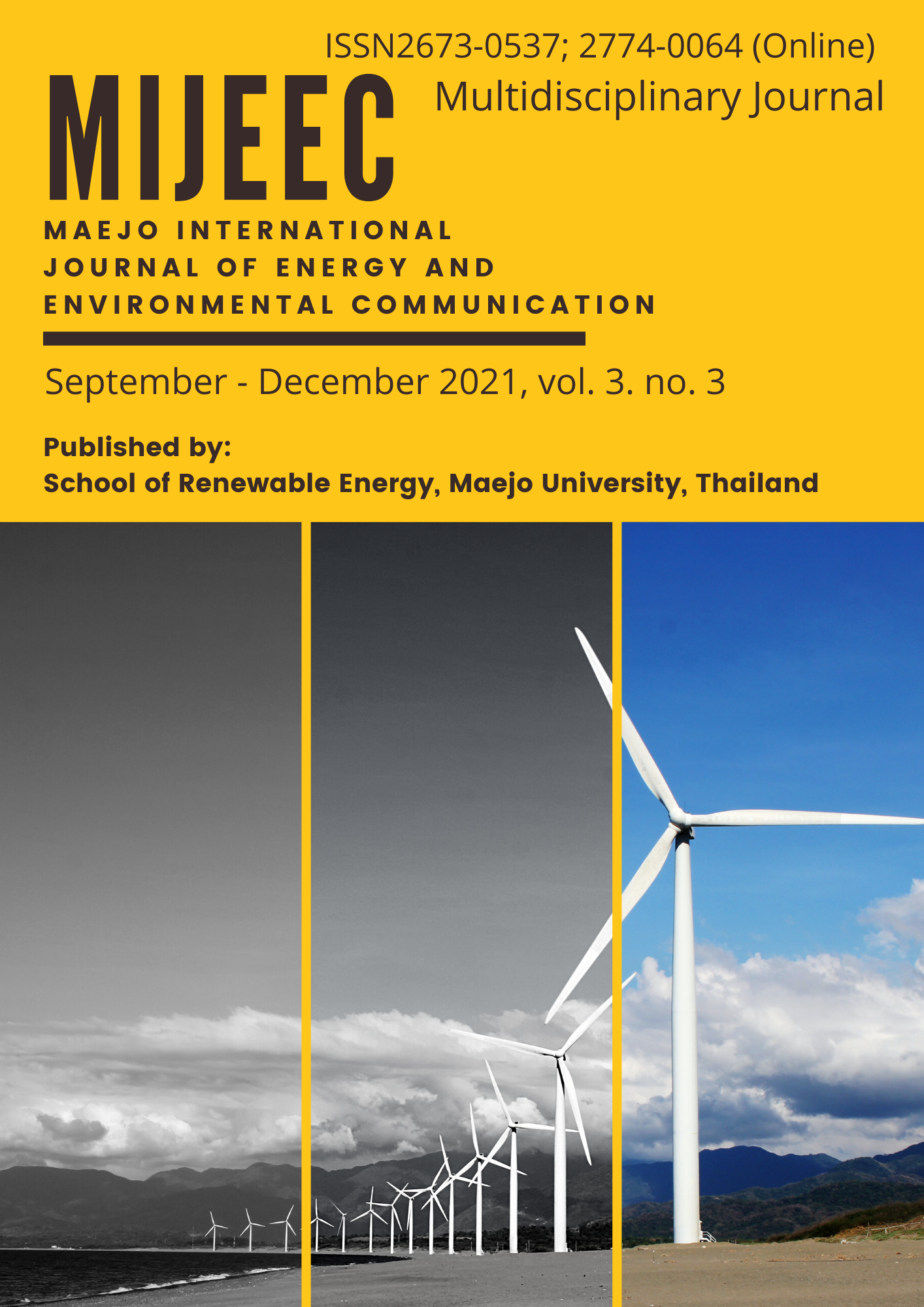Production of water-based mud for drilling operation application
Main Article Content
Abstract
A successful drilling operation is heavily dependent on the effectiveness of the drilling fluid's design in use. This study attempts to evaluate the rheological and filtration properties of water-based drilling mud (WBDM) upon the addition of Stearyl Acrylate-Behenyl Acrylate (SABA) copolymer, silicon dioxide (SiO2), and nickel (III) oxide (Ni2O3) nanoparticles. This SABA copolymer-nanofluid was prepared by dissolving the nanofluid in a SABA polymer solution and homogenizing it using ultrasonication. The properties were studied using mud balance, viscometer, and low-pressure low-temperature (LPLT) filter press. The rheological and filtration properties of SABA copolymer were found to imply that it could improve drilling fluid performance. However, the addition of nanoparticles gave a better performance of rheological and filtration properties on WBDM. SABA copolymer with 5000 ppm concentration shows the best performance due to showing the highest viscosity compared to basic drilling fluid. Also, the addition of 800 ppm of Ni2O3 concentration into 5000 ppm of SABA shows the lowest fluid losses. The experimental results indicate that SABA copolymer shows a great potential application and the addition of nanoparticles shows that nanotechnology has a lot of potentials to improve WBM performance
Article Details

This work is licensed under a Creative Commons Attribution 4.0 International License.
Copyright © 2019 MIJEEC - Maejo International Journal of Energy and Environmental Communication, All rights reserved. This is an open-access article distributed under the terms of the Creative Commons Attribution-NonCommercial- Attribution 4.0 International (CC BY 4.0) License
References
Aftab, A., Ismail, A., & Ibupoto, Z. (2017). Enhancing the rheological properties and shale inhibition behavior of water-based mud using nanosilica, multi-walled carbon nanotube, and graphene nanoplatelet. Egyptian Journal of Petroleum, 26(2), 291-299.
Aggrey, W. N., Asiedu, N. Y., Adenutsi, C. D., & Anumah, P. (2019). A novel non-ionic surfactant extract derived from Chromolaena odarata as shale inhibitor in water based drilling mud. Heliyon, 5(5), e01697.
Akinade, A. E., Wilfred, O. C., & Akin-Taylor, A. (2018). Improving the rheological properties of drilling mud using local based materials. Am. J. Eng. Res.(AJER), 7, 58-63.
Dehghani, F., Kalantariasl, A., Saboori, R., Sabbaghi, S., & Peyvandi, K. (2019). Performance of carbonate calcium nanoparticles as filtration loss control agent of water-based drilling fluid. SN Applied Sciences, 1(11), 1-8.
Elarbe, B., Elganidi, I., Ridzuan, N., Yusoh, K., Abdullah, N., & Vijaya Kumar, S. (2021). Application of full factorial design to screen the factors influencing the wax deposition of Malaysian crude oil. Journal of Petroleum Exploration and Production Technology, 1-11.
Gbadamosi, A. O., Junin, R., Oseh, J. O., Agi, A., Yekeen, N., Abdalla, Y., . . . Yusuff, A. S. (2018). Improving hole cleaning efficiency using nanosilica in water-based drilling mud. Paper presented at the SPE Nigeria annual international conference and exhibition.
Ghasemi, N., Mirzaee, M., Aghayari, R., & Maddah, H. (2018). Investigating created properties of nanoparticles based drilling mud. Heat and Mass Transfer, 54(5), 1381-1393.
Giraldo, L. J. (2018). Janus nanoparticles for enhanced oil recovery EOR: reduction of interfacial tension. Paper presented at the SPE annual technical conference and exhibition.
Golsefatan, A., & Shahbazi, K. (2020). A comprehensive modeling in predicting the effect of various nanoparticles on filtration volume of water-based drilling fluids. Journal of Petroleum Exploration and Production Technology, 10(3), 859-870.
Hasan, M. L., Abidin, N. A. Z., & Singh, A. (2018). The rheological performance of guar gum and castor oil as additives in water-based drilling fluid. Materials Today: Proceedings, 5(10), 21810-21817.
Ismail, A., Aftab, A., Ibupoto, Z., & Zolkifile, N. (2016). The novel approach for the enhancement of rheological properties of water-based drilling fluids by using multi-walled carbon nanotube, nanosilica and glass beads. Journal of Petroleum Science and Engineering, 139, 264-275.
Ji, M., Liu, S., & Xiao, H. (2018). Impacts of glyceride additive on tribological properties of water-based drilling mud for steel–steel contact. Tribology Letters, 66(4), 1-11.
Nwaiche, J. (2015). Selection and application of drilling fluids. Teesside University.
Ogolo, N., Olafuyi, O., & Onyekonwu, M. (2012). Enhanced oil recovery using nanoparticles. Paper presented at the SPE Saudi Arabia section technical symposium and exhibition.
Oseh, J. O., Norddin, M. M., Ismail, I., Gbadamosi, A. O., Agi, A., & Ismail, A. R. (2020). Experimental investigation of cuttings transportation in deviated and horizontal wellbores using polypropylene–nanosilica composite drilling mud. Journal of Petroleum Science and Engineering, 189, 106958.
Power, D., & Zamora, M. (2003). Drilling fluid yield stress: measurement techniques for improved understanding of critical drilling fluid parameters. Paper presented at the AADE Technical Conference, Houston.
Saboori, R., Sabbaghi, S., Kalantariasl, A., & Mowla, D. (2018). Improvement in filtration properties of water-based drilling fluid by nanocarboxymethyl cellulose/polystyrene core–shell nanocomposite. Journal of Petroleum Exploration and Production Technology, 8(2), 445-454.
Yang, X., Shang, Z., Liu, H., Cai, J., & Jiang, G. (2017). Environmental-friendly salt water mud with nano-SiO2 in horizontal drilling for shale gas. Journal of Petroleum Science and Engineering, 156, 408-418.
Zhang, F., Sun, J., Dai, Z., Chang, X., Huang, X., Liu, J., . . . Lv, K. (2020). Organosilicate polymer as high temperature Resistent inhibitor for water-based drilling fluids. Journal of Polymer Research, 27(5), 1-13.






